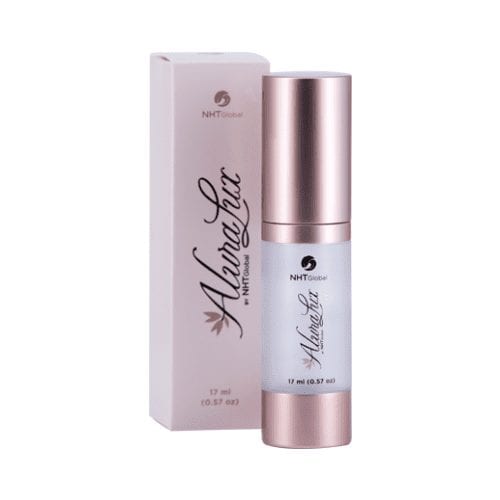10 Orgasm Myths and Helpful Facts for Better, Intense Sex

As time has progressed we as a society learn more about our bodies, our health and what makes up feeling great. When it comes to things making us feel great there is no more powerful event than experiencing an orgasm, and with it is there are have been many orgasm myths created.
With our growing knowledge of sex and orgasms, we know there are physical, emotional and physiological benefits. There is however more than just the calories we burn and the way we feel after orgasms that leave many people confused about what is truth and what is fiction.
Based on this and the questions we receive regularly from both clients and readers, we thought it a good time to clear the air on some facts and orgasms myths.
10 Orgasm Myths and Facts
MYTH: The Older Your Are the Less Chances You Have of Experiencing an Orgasm
While there are functions of our bodies that lose performance or function as we age, the ability to orgasm is not one of them. Those in committed long-term relationships with built-up trust, comfort and intimacy with their partner experience more orgasms. Age also brings wisdom as we become more familiar with our bodies and know our body’s actions, reactions and pleasure points.
FACT: Having difficulty reaching orgasm is a common issue.
Pay attention to what you base your beliefs on. Television, magazines and of course pornography paint a much different picture than reality. More than one-third of women experience some form of difficulty experiencing an orgasm during sex. If you consider only vaginal intercourse, that number jumps to over 80%.
Compared to men who seemingly have a 100% success rate for experiencing orgasm through vaginal sex, women’s sexual needs are more elaborate. Foreplay, clitoral stimulation and vaginal intercourse all play vital roles in helping women experience orgasms. Products such as Alura Lux help increase the sensitivity or the clitoris, increasing vaginal lubrication making foreplay and sex that much more pleasurable.
MYTH: Your partner is responsible for your orgasm, not you.
While there is no question your partner plays a role, remember you are the one that knows what is most pleasurable to you. As with any relationship challenges, communication is key to overcoming any obstacles.
Share in the responsibility of each other’s pleasure. If your partner is not hitting all the right spots and pushing all the right preverbal buttons, speak up. There is no need in going through the motions and not being satisfied. Guide your partner and inform them of the three P’s of pleasure – pressure, pace and place.
MYTH: Multiple orgasms are extremely rare.
Experiencing simultaneous orgasms with your partner is quite a feat and is very rare, but women experiencing multiple orgasms are common. Through all the studies conducted regularly, over half of the women reported having multiple orgasms.
The act of experiencing this is when one orgasm rolls into the next, with each one usually becoming more pleasurable than the next. While some men have reported experiencing this, this is mostly achieved by women, with most women who reported this being in their 40s to 60s.
FACT: You’re more likely to experience an orgasm with your long-term partner.
A common belief is the longer the relationship the less passion and pleasure a couple will experience as they become set in their ways. However, the opposite is true. As the relationship grows both partners become more relaxed, less self-conscious and overall more comfortable with their partner and themselves. This increase in sexual self-esteem greatly improves the ability to experience orgasms regularly.
MYTH: Condoms inhibit a woman’s ability to experience an orgasm.
Condoms have greatly improved over the years with added features that can help stimulate a woman. There is no hard evidence that suggests the use of condoms inhibits a woman’s ability to climax. A condom can desensitize and deprive a man of the maximum sexual pleasure that can be used to a woman’s advantage. Most condoms provide added lubrication and can help some men last significantly longer, thus providing additional stimulation during intercourse.
FACT: Women can have orgasms without any physical stimulation.
An extragenital orgasm is an orgasm brought upon by no physical contact with the body. These orgasms, although rare, could be brought about by fantasizing or abruptly come about by going about normal daily tasks. But be careful what you wish for: select women are constantly inconvenienced by hundreds of unprompted, spontaneous orgasms every day.
FACT: Certain foods can boost your ability to experience orgasms.
While we often associate testosterone with men, it’s the hormone that controls sexual desire in women. Foods low in carbohydrates and high in protein: dairy, eggs, poultry and select meat and fish, for example, work to raise free testosterone. Among other libido-boosting foods, small amounts of dark chocolate can trigger releases of dopamine—a monoamine neurotransmitter that allows humans to experience sexual pleasure.
MYTH: Orgasms are defined by sound.
Everyone reacts differently when they experience an orgasm and each orgasm is different than the last. While the media may falsely lead you to believe you can tell an orgasm by its sound, their intensity cannot be measured by decibels. For those who have experienced a true orgasm, the experience can hardly be put into words, let alone sounds.
MYTH: Quality of sex determined by orgasms.
It’s wise not to reduce things as natural and as beautiful as sex as a means to an end. If you look back on your most pleasurable sessions of sensuality, they’re most likely ones that involved a considerable amount of toe-curling, tension-building foreplay—a mini, longer-lasting orgasmic experience in itself. Remember: sex, like life, is a journey, not a destination—meant to be enjoyed every step of the way.
As always we appreciate all your emails and comments, and don’t forget to share this information with your friends.



